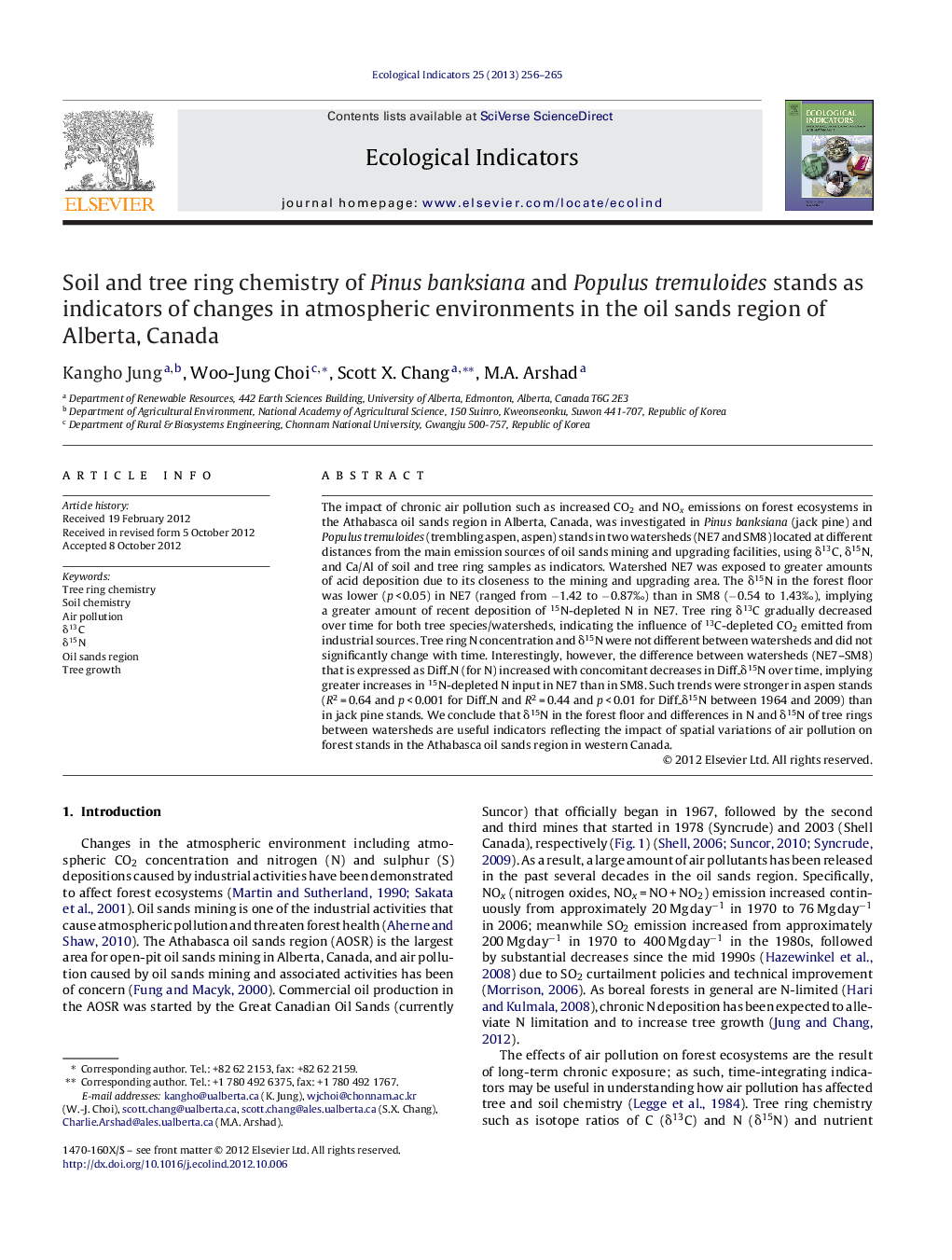| Article ID | Journal | Published Year | Pages | File Type |
|---|---|---|---|---|
| 4373608 | Ecological Indicators | 2013 | 10 Pages |
The impact of chronic air pollution such as increased CO2 and NOx emissions on forest ecosystems in the Athabasca oil sands region in Alberta, Canada, was investigated in Pinus banksiana (jack pine) and Populus tremuloides (trembling aspen, aspen) stands in two watersheds (NE7 and SM8) located at different distances from the main emission sources of oil sands mining and upgrading facilities, using δ13C, δ15N, and Ca/Al of soil and tree ring samples as indicators. Watershed NE7 was exposed to greater amounts of acid deposition due to its closeness to the mining and upgrading area. The δ15N in the forest floor was lower (p < 0.05) in NE7 (ranged from −1.42 to −0.87‰) than in SM8 (−0.54 to 1.43‰), implying a greater amount of recent deposition of 15N-depleted N in NE7. Tree ring δ13C gradually decreased over time for both tree species/watersheds, indicating the influence of 13C-depleted CO2 emitted from industrial sources. Tree ring N concentration and δ15N were not different between watersheds and did not significantly change with time. Interestingly, however, the difference between watersheds (NE7–SM8) that is expressed as Diff_N (for N) increased with concomitant decreases in Diff_δ15N over time, implying greater increases in 15N-depleted N input in NE7 than in SM8. Such trends were stronger in aspen stands (R2 = 0.64 and p < 0.001 for Diff_N and R2 = 0.44 and p < 0.01 for Diff_δ15N between 1964 and 2009) than in jack pine stands. We conclude that δ15N in the forest floor and differences in N and δ15N of tree rings between watersheds are useful indicators reflecting the impact of spatial variations of air pollution on forest stands in the Athabasca oil sands region in western Canada.
